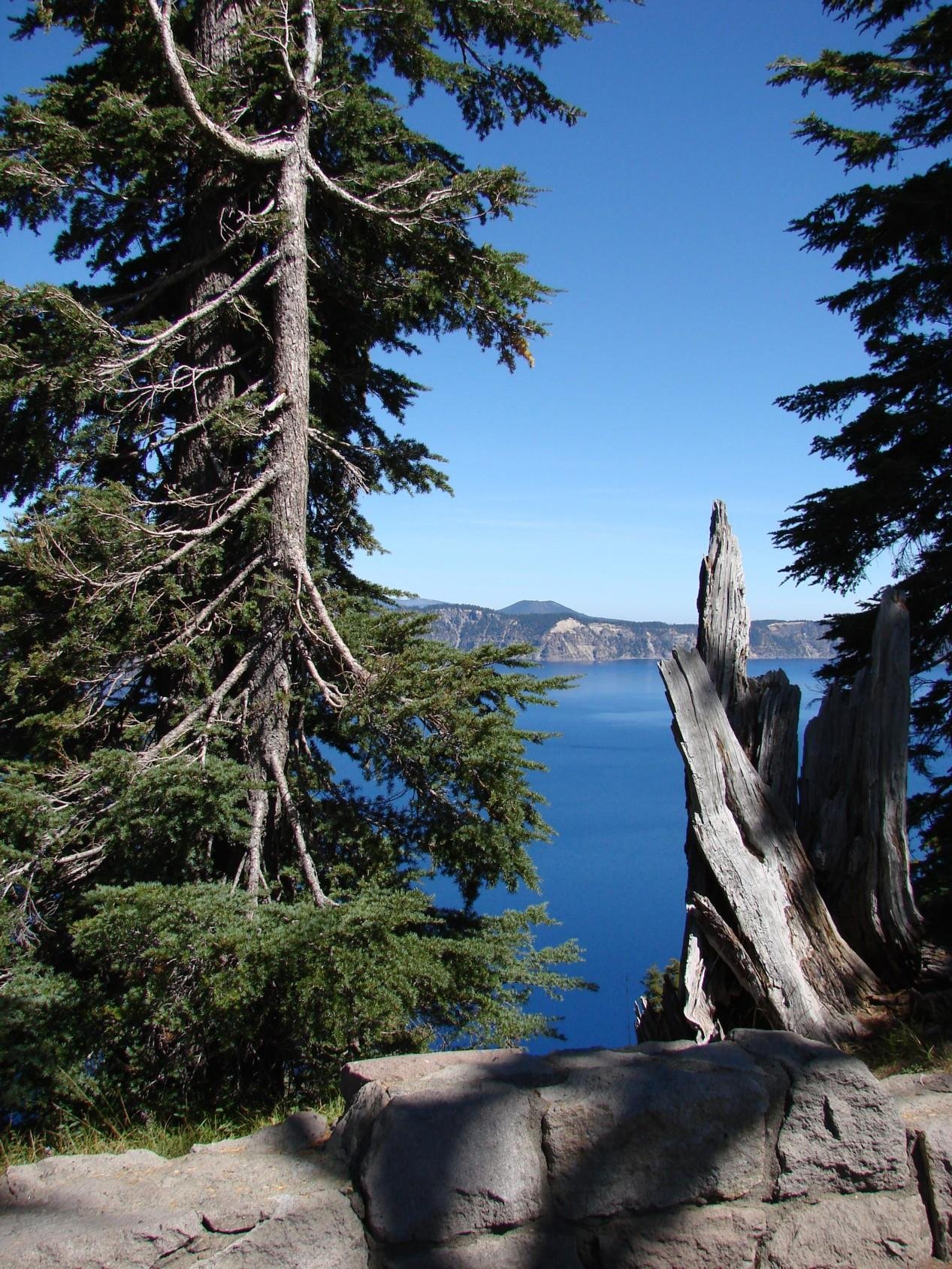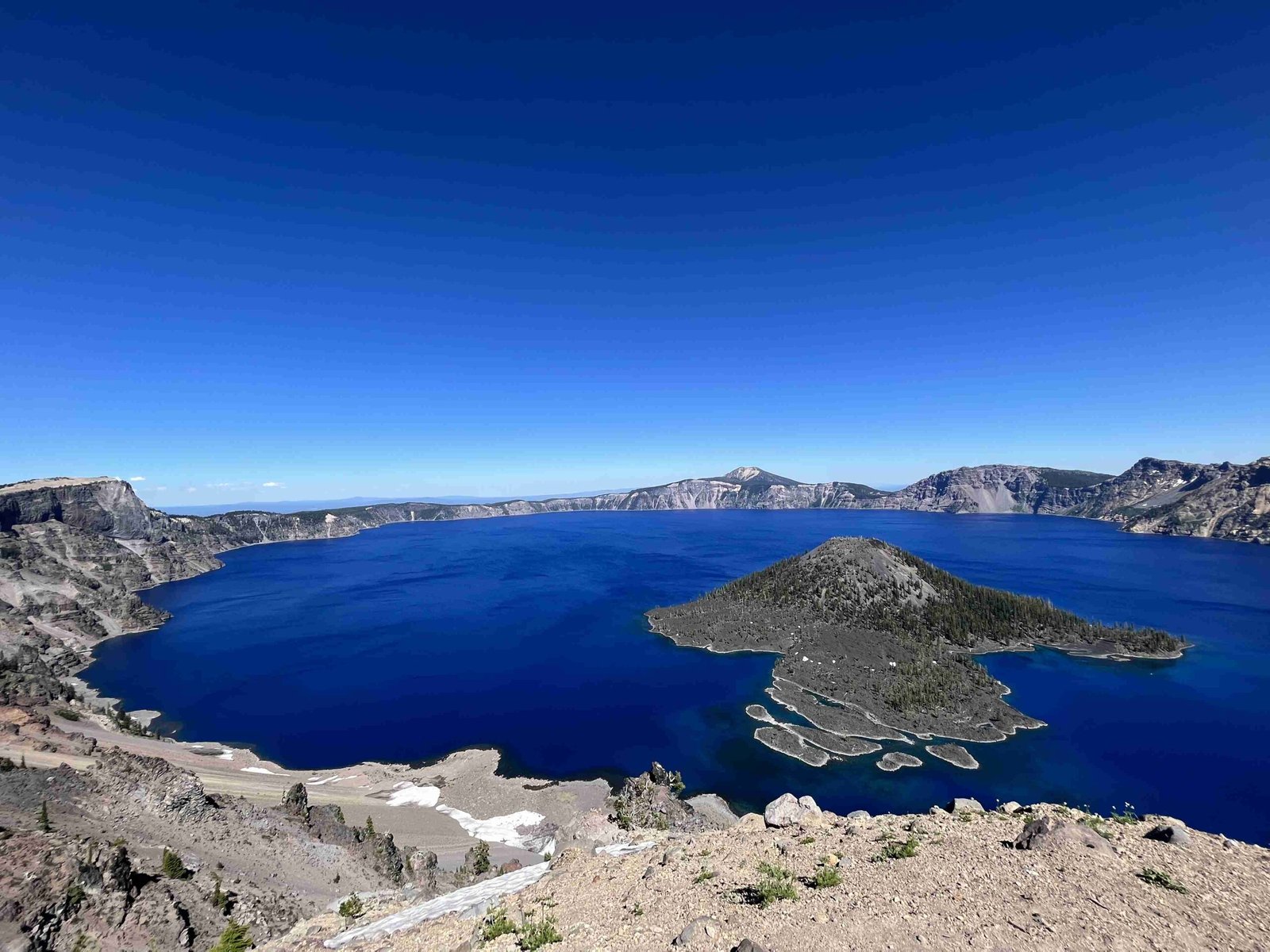Crater Lake in Oregon boasts a unique climate characterized by extreme seasonal variations. With cold, snowy winters and mild summers, the park experiences significant temperature fluctuations and heavy snowfall. The climate strongly influences visitor activities and park accessibility throughout the year. This guide explores the intricate details of Crater Lake’s climate, including temperature ranges, precipitation patterns, and seasonal weather conditions.
What Are the Temperature Ranges at Crater Lake?

Crater Lake’s temperature varies dramatically throughout the year, affecting visitor experiences and activities:
- Summer (July-August): Warmest months with highs around 23°C (73°F) and lows of 2°C (36°F)
- Winter (December-February): Coldest period with highs of 2-4°C (36-39°F) and lows between -9°C to -8°C (16-18°F)
- Spring (March-May): Gradual warming with highs from 5-14°C (41-57°F) and lows from -7°C to -3°C (19-27°F)
- Fall (September-November): Cooling trend with highs from 5-19°C (41-66°F) and lows from -7°C to -1°C (19-30°F)
How Do Temperatures Affect Visitor Activities?
| Season | Temperature Range | Popular Activities |
|---|---|---|
| Summer | 2-23°C (36-73°F) | Hiking, boating, scenic drives |
| Winter | -9-4°C (16-39°F) | Cross-country skiing, snowshoeing |
| Spring | -7-14°C (19-57°F) | Early-season hiking, wildlife viewing |
| Fall | -7-19°C (19-66°F) | Foliage viewing, less crowded trails |
What Are the Precipitation Patterns at Crater Lake?

Crater Lake receives significant precipitation, primarily as snow:
- Annual Precipitation: Approximately 1,695 mm (66.7 inches)
- Wettest Month: December, averaging 285 mm (11.2 inches)
- Driest Months: July and August, each averaging 20 mm (0.8 inches)
How Does Precipitation Vary by Season?
- Winter (November-March): 70% of annual precipitation, mostly as snow
- Summer (July-August): Minimal precipitation, occasional thunderstorms
- Spring and Fall: Transitional periods with mixed rain and snow
What Is the Snow Accumulation at Crater Lake?
Crater Lake is renowned for its heavy snowfall:
- Average Annual Snowfall: 13 meters (505 inches) or 43 feet
- Snowiest Months: January (104.9 inches), December (93.5 inches), March (84.2 inches)
- Least Snowy Months: July and August (minimal snowfall)
How Does Snow Affect Winter Recreation and Park Access?
- Supports winter sports like cross-country skiing and snowshoeing
- Limits accessibility with road and facility closures from mid-October to mid-May
- Requires specialized equipment for winter visitors
What Are the Seasonal Weather Conditions at Crater Lake?
Crater Lake’s weather varies significantly across seasons:
- Wind Patterns: Northwest winds in summer, southwest in winter
- Humidity: Generally dry climate, especially in summer
- Extreme Weather: Cold waves in winter (below -20°C/-4°F), occasional freezing summer nights
How Do Weather Conditions Impact Visitor Planning?
- Summer Planning:
- Pack layers for cool nights
- Prepare for occasional thunderstorms
-
Enjoy extended daylight hours for activities
-
Winter Planning:
- Bring heavy winter gear
- Check road conditions and closures
-
Plan for limited services and facilities
-
Spring/Fall Planning:
- Prepare for mixed weather conditions
- Bring waterproof gear for potential rain or snow
- Enjoy fewer crowds but be ready for unpredictable weather
What Makes Crater Lake’s Climate Unique?
Crater Lake’s climate is shaped by its high elevation and geographical location:
- Elevation: 6,178 feet (1,883 meters) at rim, affecting temperature and precipitation
- Location: In the Cascade Range, influencing weather patterns
- Lake Effect: The deep lake moderates local temperatures slightly
How Does Crater Lake’s Climate Compare to Surrounding Areas?
- Generally cooler and wetter than lower-elevation areas nearby
- More extreme winter conditions than most of Oregon
- Unique microclimate due to the caldera’s shape and the lake’s presence
Understanding Crater Lake’s climate is crucial for visitors to plan their trips effectively and safely enjoy all the park has to offer throughout the year.

